Figure shows a small block of mass m kept at the left end of a larger block of mass M and length l. The system canslide on a horizontal road. The system is started towards right with an initia velocity v. The friction coefficient between the road and the bigger block is μ and that between the block is μ2. Find the time elapsed before the smaller blocks separates from the bigger block.
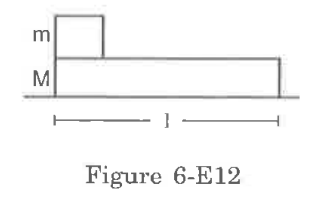
The correct Answer is:D
Let a1anda2 and the acelerations of m and M respectively.
Here a1>a2 so that moves on M. Suppose after time t, m is seperted from M.
In this time , m covers vt+12a1t2andSv=vt+12a2t2
For m to separate from M
vt+12a1t2=vt+12a2t2+1...ii
Again from the free body diagram
ma1+μ2R=0
→ma1=−(μ2)mg=(μ2)m×10
→a1=−5μ
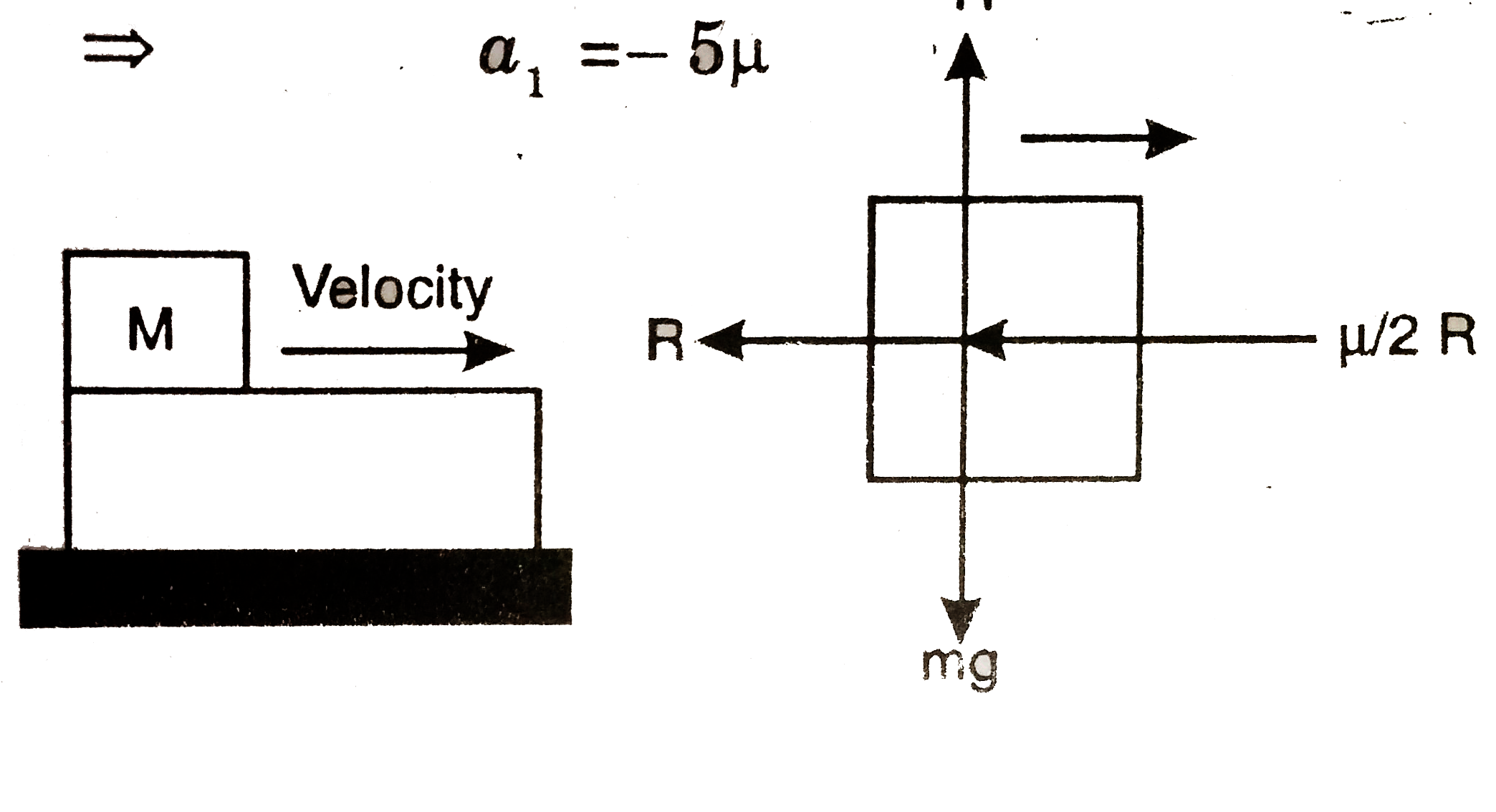
Again Ma2+μ(M+m)g−(μ2)mg=0
→2Ma2=μmg−2μMg−2μmg
→a2=−μmg−2μMg2M
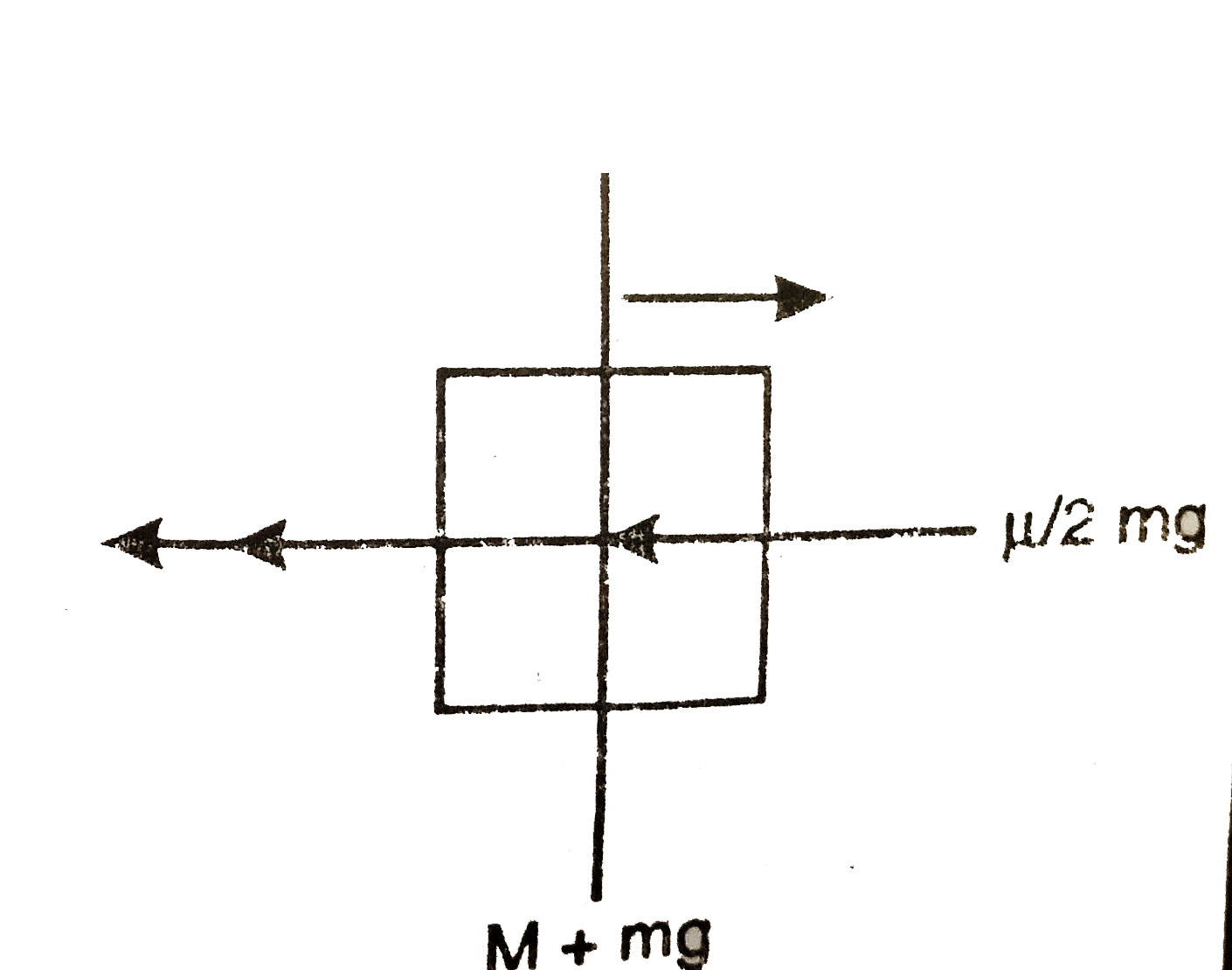
Putting values of a1
and a2∈equation<br>i.we≥t,<br>t sqrt((4Ml)/((M+m)mug)
Topper's Solved these Questions
Similar Questions
Figure shown a small block A of mass m kept at the left end of a plank B of mass M=2m and length l . The system can side on a horizontal rood. The system is started towards right with the initial velocity v. The friction coefficient between the rood and the plank is 1/2 and that between the plank and the block is 1/4 . Find
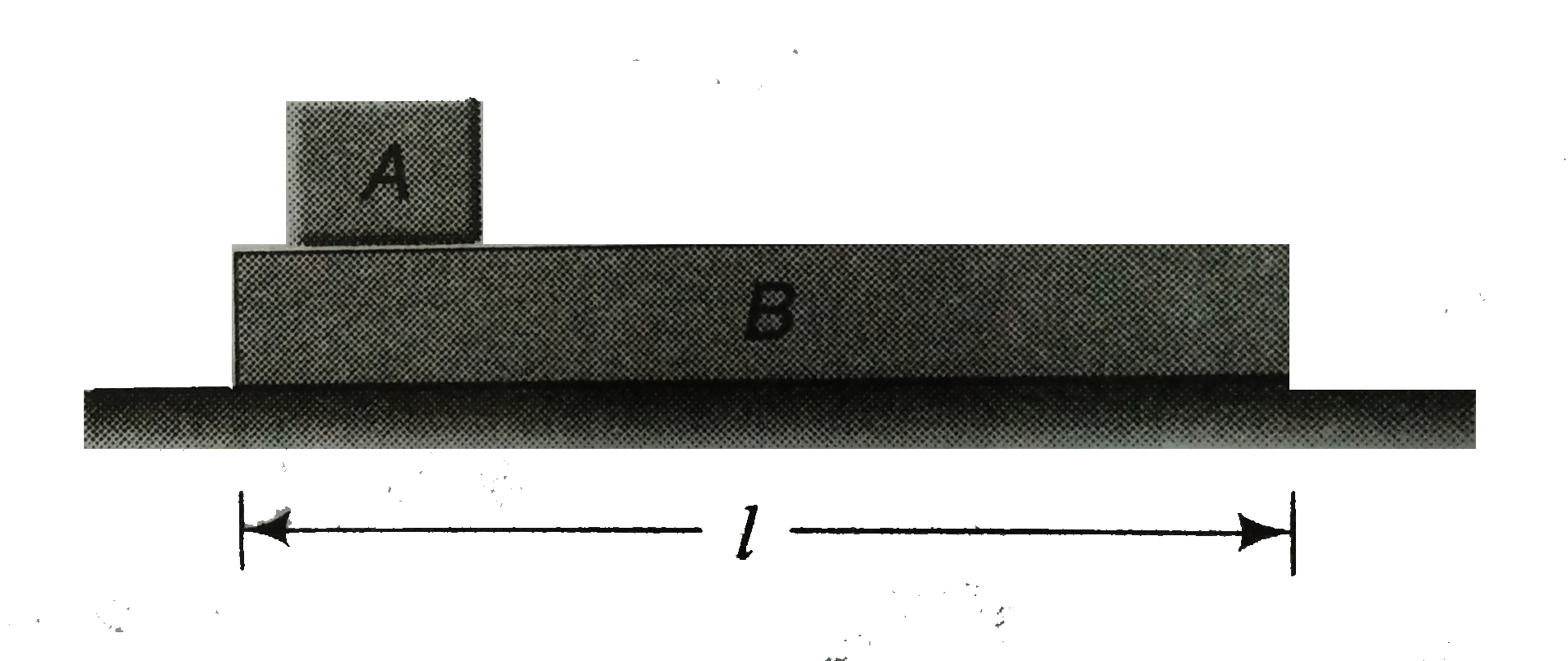
(a) the time elapsed before the block separates from the plank
(b) displacement of block and plank relative to ground till that moment.
View SolutionThe block of mass M and are arrenged as the situation in fig is shown.The coefficient of friction between two block is μand that between the bigger block and the ground is μ find the acceleration of the block
View Solution
Knowledge Check
If coefficient of friction between both the block is μ−12 . Find friction force acting between both block.
 A16NB20NC8ND10N
A16NB20NC8ND10NA block of mass m is pulled by a force of constant power P placed on a rough horizontal plane. The friction coefficient between the block and the surface is μ. Then
AThe maximum velocity of the block during the motion is PμmgBThe maximum velocity of the block during the motion is P2μmgCThe block's speed is never decreasing and finally becomes constantDThe speed of the block first increases to a maximum value and then decreasesA block of mass M is placed on the top of a bigger block of mass 10 M as shown in figure. All the surfaces are frictionless. The system is released from rest, then the distance moved by the bigger block at the instant the smaller block reaches the ground :
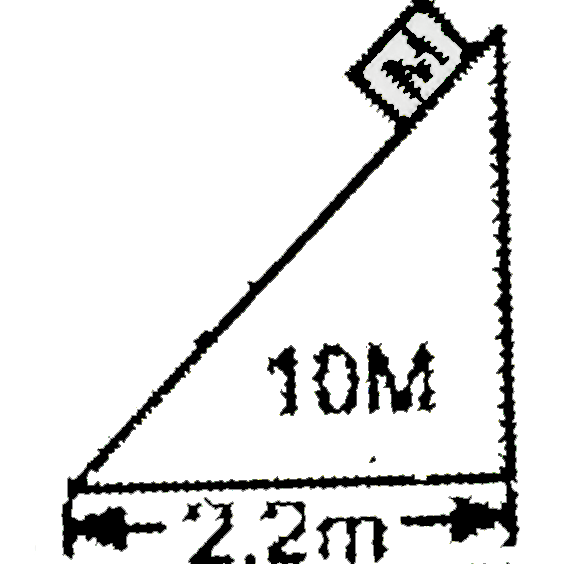 A0.22 mB0.20 mCzeroD0.24 m
A0.22 mB0.20 mCzeroD0.24 m
Both the blocks are given same velocity towards right. In how much time , the smaller block will separate from the large block.
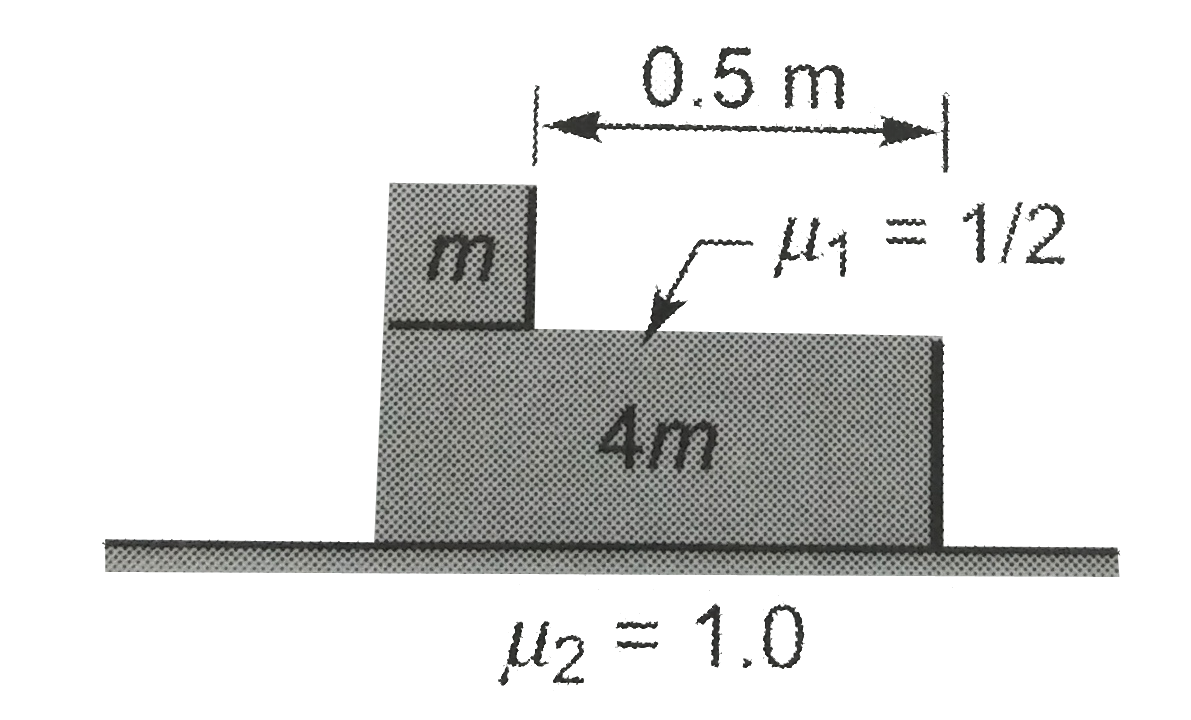
View SolutionFind the acceleration of the block of mass M in the situation of figure. The coefficient of friction between the two blocks is μ1 and that between the bigger block and the ground is μ2.
View SolutionA block of mass m is kept over another block of mass 2m and the system rests on a smooth horizontal surface. The coefficient of friction between the block is 0.50. Find the work done by the force of friction on the smaller block by the bigger block during a displacement the of the system when a force mg is applied to the lower block
View SolutionThe friction coefficient between the blocks is μ. Sketch a graph showing variation of acceleration of the blocks will move separately.
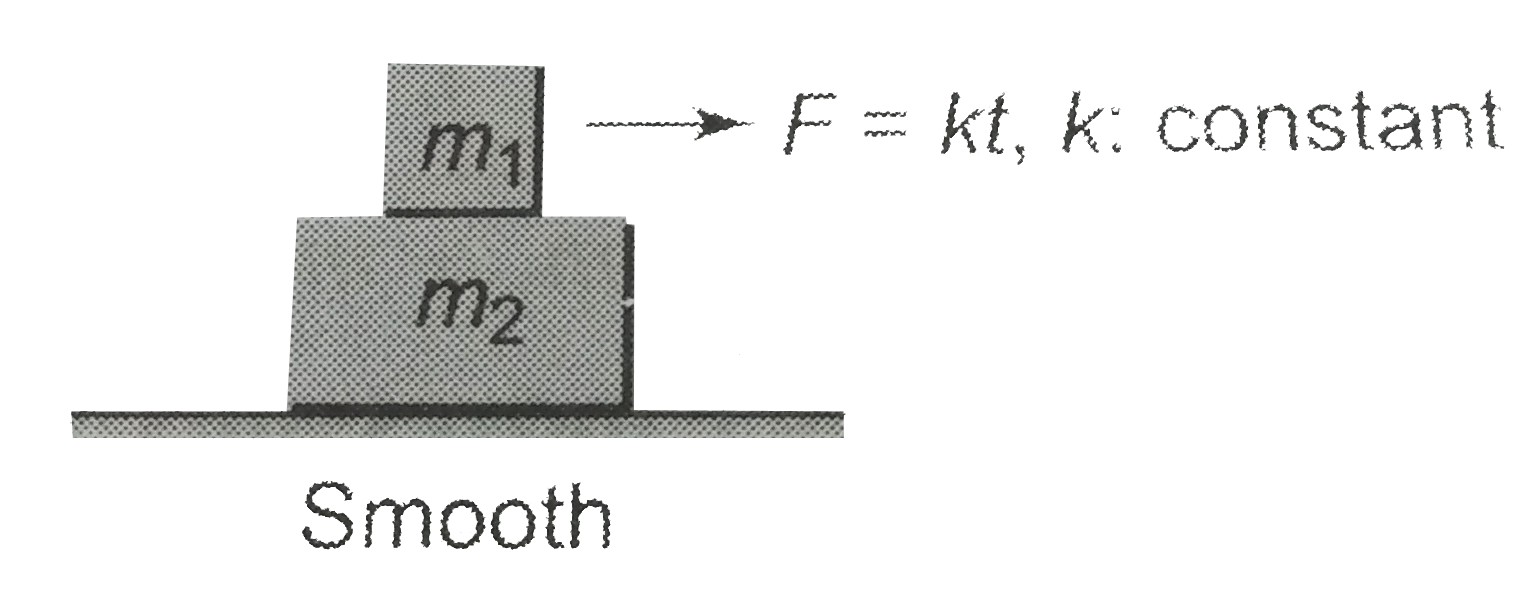
View SolutionA block of mass m ios pulled by a constant power P placed on a rough horizontal plane. The friction co-efficient between the block and surface is μ. Find maximum velocity of the block.
View Solution

